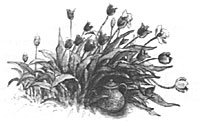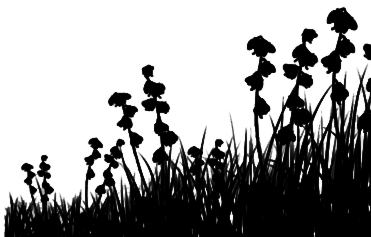|
Author Profile
Riverbank Review
by Christine Heppermann, Fall 2002
|
|
|
|
“Facts can be understood differently, they can add up to different answers depending on how they are viewed.” This powerful realization for the character Hillary in Janet Taylor Lisle's Newbery Honor-winning novel Afternoon of the Elves (1989) encapsulates the theme of every one of Lisle's children's novels—thirteen to date. In Hillary's case, the subject of interpretation is her friend, Sara-Kate. Depending on how you look at her, Sara-Kate is either a severely neglected child living in poverty with her mentally ill mother, or, as Hillary prefers to believe, a magical, resourceful elf. Or could both possibilities be correct? As Hillary comes to understand, “perhaps being hungry and cold and angry and alone didn't mean you couldn't still be an elf. In fact, maybe those were exactly the things elves always were.”
Having grown up in Connecticut, the oldest of five children and the only girl, Lisle vividly recalls an incident from her own childhood in which reinterpreting the “facts” changed her self-perception. In sixth grade, she had a difficult time adjusting to a new school and her grades plummeted. She became mired in fear and frustration, taunted by math problems with solutions that grew farther out of reach the harder she tried to grasp them, until a compliment from a teacher rescued her. The teacher praised her abilities on the soccer field and with that single, calculated comment, as Lisle explains in an essay for the Something about the Author Autobiography Series, gave her “an identity”: “I was 'good in sports,' so I didn't mind asking the teacher to explain the mixture problem on the board again.” She remained a dedicated athlete, branching out from soccer to field hockey, lacrosse, and basketball during her high school years at a Connecticut boarding school.
A year spent in Atlanta working for VISTA (Volunteers in Service to America), following her graduation from Smith College in 1969, motivated Lisle to pursue a career in journalism. Being a newspaper reporter, she figured, was the best way to let people know about the devastating poverty she had witnessed. Over time, she found that she enjoyed writing the more “loose-limbed” human interest stories rather than straight news. She explains in Something about the Author that she “looked out for stories covering the 'nonevent.' For instance, if the church fair was cancelled because of rain, I interviewed the workers packing up to go home, and wrote about the rivalries and the unexpected friendships that spring up behind the scenes of such events.” This strategy may have frustrated her editors but undoubtedly paved the way for the attentively observed, multifaceted characters in her novels to come.
With her husband and young daughter, Lisle moved to New Jersey in 1981 and took a writing workshop that sparked a fortuitous connection. Her instructor offered to introduce her to a children's book editor, who turned out to be the now-preeminent Richard Jackson. Jackson accepted Lisle's first book, The Dancing Cats of Applesap, in 1983, and has worked with her ever since. Jackson says, “Janet Taylor Lisle is drawn to the mystery of things, to the ambiguity of life that books for children often gloss over or pussy-foot around. She's a keen observer of surfaces, a 'social writer' in that sense; but her interest is in what's hidden. As well as why.”
The story of a shy girl and a down-and-out, cat-infested drugstore with a secret attraction that might just save it from going under, The Dancing Cats (1984) inaugurated Lisle's preoccupation with magic lurking in unlikely places—although the definition of unlikely depends on one's perspective. The grown-ups in Afternoon of the Elves, for instance, and even Hillary herself at first, look at Sara-Kate's backyard and see a repellent mess:
|
|
| Where there weren't thistles and weeds, there was mud, and in the mud, broken glass and wire and pieces of rope. There were old black tires and rusty parts of car engines and a washing machine turned over on its side. Carpets of poison ivy grew under the trees and among the bushes. |
|
| Is this really a suitable place for the exquisite miniature houses, made from leaves and twigs, that Sara-Kate insists were built by elves? Yes, Hillary eventually decides, because magic needs a little wildness and disarray to help it along. Sara-Kate's backyard opens itself up to a kind of enchantment that could never find space to grow in Hillary's family's carefully maintained lawn and flower beds. |
|
 |
|
| “Janet Taylor Lisle is drawn to the mystery of things, to the ambiguity of life that books for children often gloss over . . . her interest is in what's hidden. As well as why.”
|
| —Richard Jackson |
|
| Not only exterior but also interior upheaval seems an invitation for magic to take hold in many of Lisle's tales. Evidence of elves, fairies, extraterrestrials, and spirits presents itself to children dealing with serious “real-life” issues, such as a mother's death or parents' divorce. Far from making light of these painful scenarios, the fantastical elements deepen them, as in Lisle's brilliantly woven The Lost Flower Children (1999). Nine-year-old Olivia and her five-year-old sister Nellie are reluctantly pawned off on their timid, disheveled great-aunt the summer after their mother dies. Aunt Minty's overgrown garden reflects the girls' volatile emotional state, which their father has opted to ignore, stifling them with a barrage of false cheerfulness. A book in Aunt Minty's library about evil green fairies who once turned a party of children into flowers captures Olivia's attention, especially when, cup by cup, she and Nellie unearth an old blue china tea set in Minty's garden. Is this the same tea set from the story, the one the fairies buried as part of a countercharm? Once the girls have found all the pieces, will the spell be broken—as the story suggests—and the children reappear? It turns out that Aunt Minty is not so timid after all, so perhaps Olivia is right to suspect her of burying the tea set herself in order to rouse her charges out of their grief-induced isolation. But, here and in her other novels, Lisle wisely holds out the possibility that so-called supernatural forces are indeed at work.
Reflecting in Something about the Author, Lisle says she believes that adults were more often a hindrance than a help to her childhood self: |
|
| The rules and requirements of the adult world were very often at odds with my child's world and its needs, and so there was friction and resentment, watchfulness and not a little plotting on my side to bring about what might, under ordinary circumstances, be unobtainable. |
|
| So, too, do her child characters often need to resort to covert maneuverings. Olivia listens in on adult phone conversations since “it was the only way to find out what was really happening, because no one was going to tell her.”
The quirky trio of friends in Lisle's delectable Investigators of the Unknown quartet (The Gold Dust Letters, Looking for Juliette, A Message from the Match Girl, and Angela's Aliens) secretly devote themselves to learning more about the spirit beings known as “invisibles” and other “unexplainable things.” At the same time, they support one another through various family troubles, generated by their often well-meaning but ineffective, sometimes altogether absent, parents.
When an adult is taken into confidence, it is usually someone on the fringes, like the old farmer in The Great Dimpole Oak (1987), a fanciful fable about the power of storytelling that showcases Lisle's own storytelling prowess. For generations, the children of Dimpole have listened spellbound while the farmer spun chilling yarns about criminals hanged from and treasure buried beneath the town's majestic ancient tree. Now some of Dimpole's leading citizens have decided that he is at best a nuisance, and at worst “a sick man who ought to be in a hospital somewhere instead of wandering around scaring children with silly stories.” If not for the chance interference of two boys, the farmer might have been intimidated into silence, although his unforgettable tales no doubt would have lived on through other tellers. |
|
 |
|
Misunderstood artists also appear in Sirens and Spies (1985) and The Art of Keeping Cool (2000), winner of the 2000 Scott O'Dell award for historical fiction. Although these books are a departure for Lisle in that they take place solely in the “real” world, with no otherworldly elements creeping in, they still revolve around the slippery question of interpretation and what it means to know the “facts” about a person or event.
Miss Fitch, the violin teacher in Sirens and Spies, has always had an air of the exotic about her, which most people in the Connecticut town where she lives attribute to her being French. Elsie, Miss Fitch's prize pupil, isn't content with this explanation, so she does some sleuthing and discovers a shocking secret. Decades ago, in occupied France during World War II, Miss Fitch fell in love with a German soldier and had his baby. Even when Elsie's sister, Mary, cajoles Elsie into confronting Miss Fitch with her findings rather than shunning her without explanation, it doesn't completely erase Elsie's bitterness, as this conversation between the sisters makes clear: |
|
Well, Miss Fitch is no traitor, that's one sure thing,” [said Mary].
“Who said so?”
“She did. That's what she spent this whole night telling us, remember? Didn't you hear?”
“I heard everything,” answered Elsie, "including how she collaborated with a Nazi soldier...”
“She fell in love, you idiot!”
“and slept with him...”
“But she was so lonely. He was her only friend.“
“...and how she got him killed...”
“That wasn't her fault! It was the war. The war killed him! She was terrified...”
“It really depends,” said Elsie slowly, “on how you look at it.” She put her hands behind her head and stared straight in front of her. |
|
| In The Art of Keeping Cool, another story about World War II, German-born painter Abel Hoffman faces condemnation on a much larger, more dangerous scale. Set in 1942 in coastal Rhode Island, where Lisle has spent summers since childhood and currently lives year-round, the first-person narrative gathers force as it demonstrates that “keeping cool”—maintaining a low profile, trying to pretend that nothing bothers you—doesn't always work as a survival strategy. In the narrator Robert's family, it may keep everyone physically alive, but it leaves festering psychological wounds with no chance to heal. For Abel Hoffman, who escaped persecution in Nazi Germany only to find himself accused of spying for the Nazis in America, it won't stop the masses from believing what they want to believe about him.
Back when her first book was published, Janet Taylor Lisle came to terms with what she has called “the great, ironic distinction between nonfiction and fiction.” The young aspiring author in Lisle's latest novel, How I Became a Writer and Oggie Learned to Drive, expresses it this way: |
|
| A lot of people think that fiction stories aren't the truth, that a story isn't worth reading if it didn't really happen. But they're wrong. The realest stories are the ones that are made up, because if you do it right, they go down deep to where the real truth is, below all the fake stuff on the surface. |
|
| Delving into one of Lisle's novels is an act of excavation, which leads to the thrilling realization that, no matter how far beneath the surface one goes, there's always more to be discovered. |
|
 |
|
|
|
|
|
 |
|





